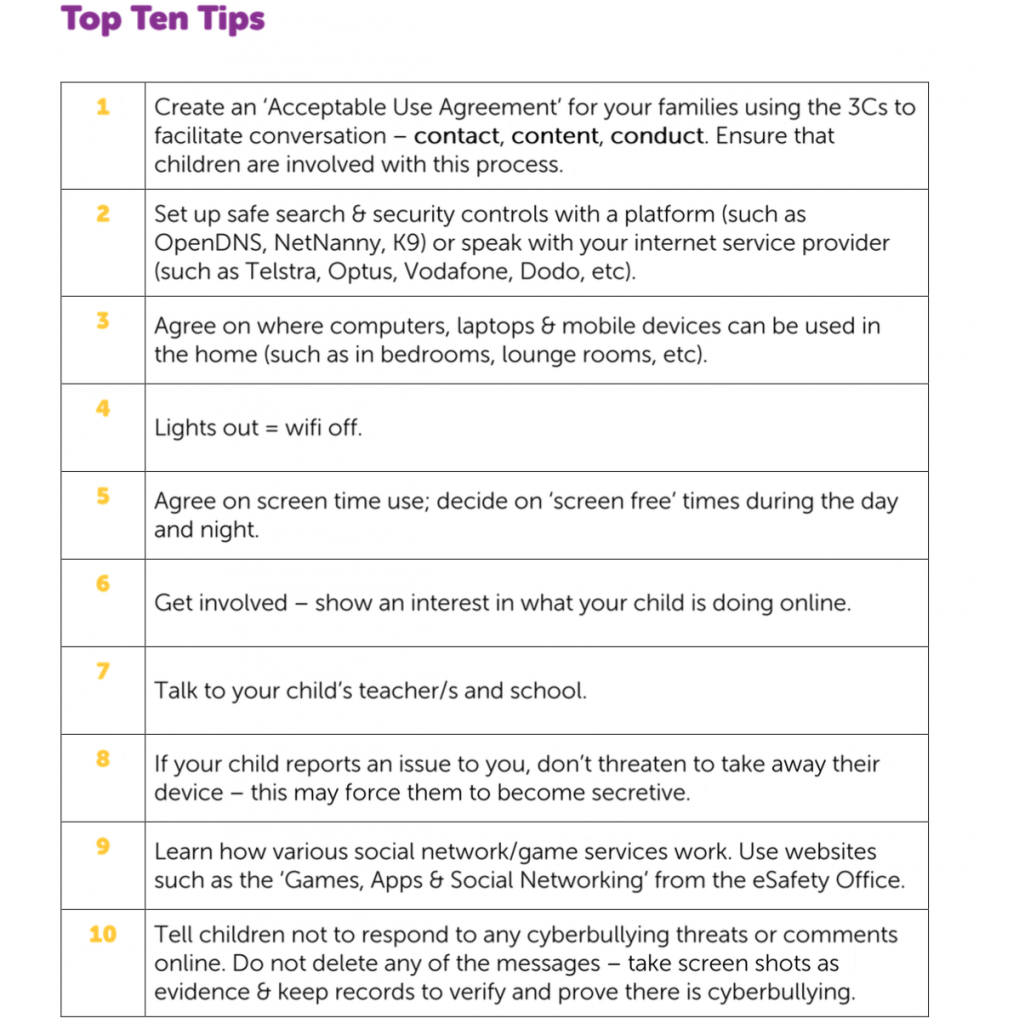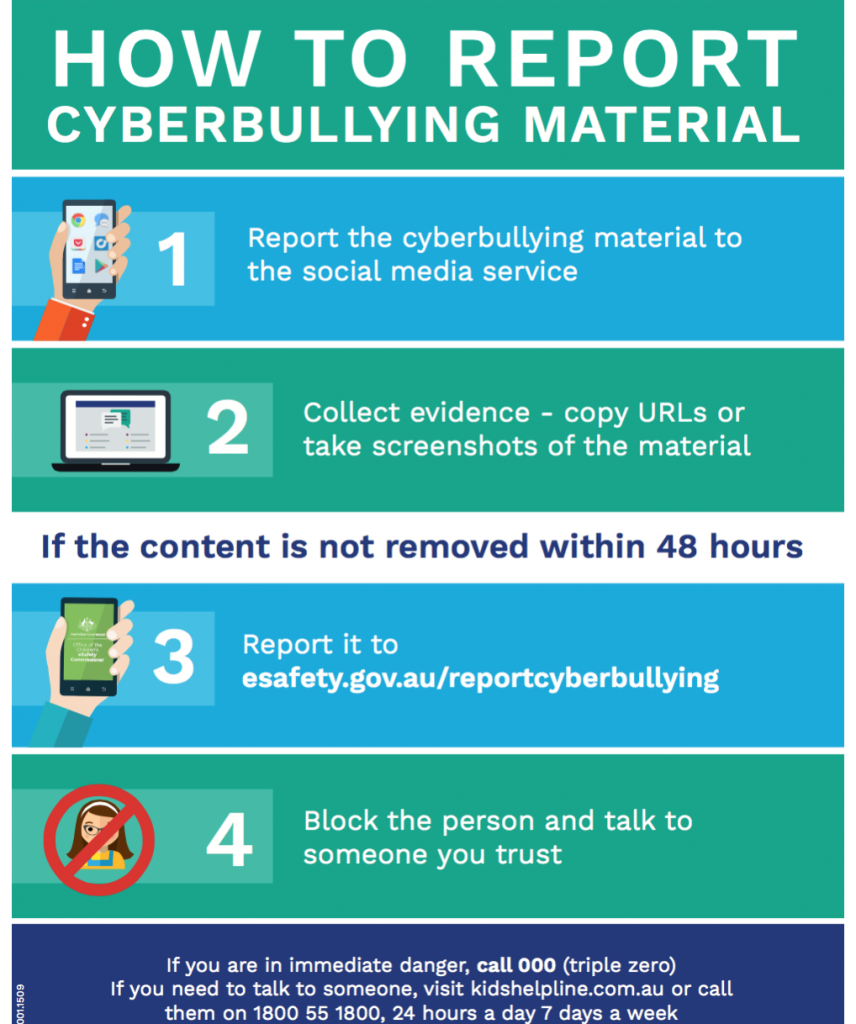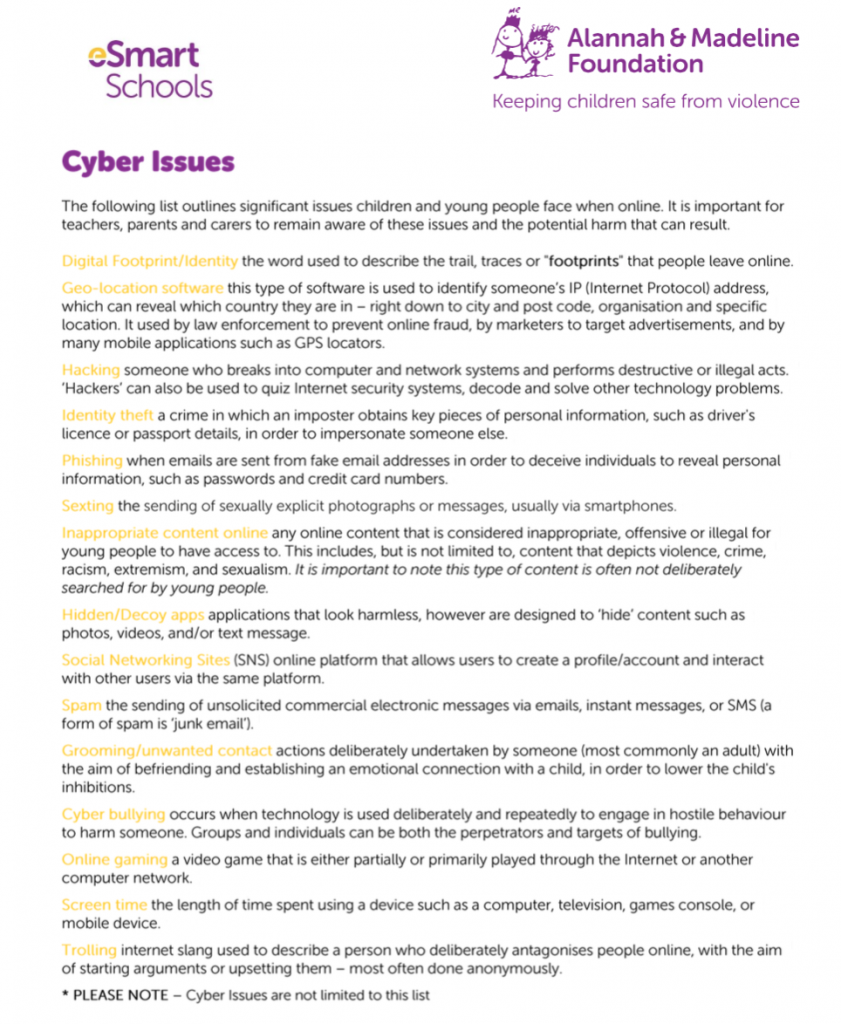Melanie from eSmart presented to our parents on Tuesday night.
She started off by mentioning that guiding parents in digital citizenship is a role she regards as very important and that there were a few points she wanted to make straight away:
- whatever you do in your own home must be suited to your own parenting style
- things change so quickly so it’s important to be adaptable and flexible
She discussed how it was really important that we recognise that many schools had quite clear boundaries around internet and technology use and that it was crucial that we extend this conversation into the home and that we focus on being smart, safe and responsible.
KEY MESSAGE – DIGITAL PARENTING TODAY IS CHALLENGING AND CONFUSING
We are the last generation born without internet technology to teach the first generation born into technology ……..we know why we tell our kids to brush their teeth etc but with the internet- we haven’t been the recipient of the the modelling our parents gave us when we were young.
KEY MESSAGE – BE PROACTIVE AND NOT REACTIVE
As an example, choose a good starting block like Club Penguin or Junior Minecraft and use it to explore the parameters of what you will allow as parents in your own home. Don’t immediately say ‘no’ to requests – instead explore options with your children and learn with them.
KEY MESSAGE – we don’t believe in taking technology away – always use mistakes as an opportunity to learn and teach.
BRAVE vs BAD parenting – Melanie told us she is not here to make this point in terms of what you might allow in your own home – specifically speaking about people who allow their own children on websites and apps that are limited to 13+.
Background on the Alannah Madeline Foundation – aim to keep children safe
- eSmart is a behavourial change initiative aimed at supporting schools to support communities and their students.
- It seeks also to help people realise that technology brings so many benefits to our lives as adults and that students also have the right to use tech for the same varied and dynamic purposes.
Kids make many ‘in the moment’ decisions and not many of them are to consciously cause harm. So, we need to give our communities the tools the support they need to access the fantastic benefits of technology and to support our kids (in whatever stage of development they are at) to do the same.
A reminder was given to the community that the frontal lobe (reasoning etc) matures for 22 for females and males at 27. So, what we need to do is to monitor and support our kids in the years before they are fully equipped with the full and mature reasoning ability to deal with challenging issues.
What are Current Cyber Issues? Melanie then put a list on the board and many were discussed:
- digital reputation
- geo-locations
- hacking
- identity theft
- sexting
- inappropriate content online
- phishing
- trolling
- cyber bullying
- spam
- online gaming
3Cs of CyberSafety
Contact
- Only people you know face-to-face. In Yr 4, for example, it might be 4 people you know who you are allowed online contact with and in Yr 5, you might increase that
- Acquaintances and mutual friends – understanding that your online friends also have online friends and they have online friends….So, you need to understand that care must be taken in terms of online contact.
- Be aware of private information and photos – what is appropriate to share and what is not. Private VS Personal information – is a note for education.
- Kids need to know how to respond to inappropriate content
Content
- often kids will stumble upon inappropriate content by mistake
- ask your providers to put some ‘family friendly’ filters in place or explore some modem filtering
Conduct
- same rules in the face-to-face world apply in the online world.
- the poster ‘THINK’ – put this on your fridge as this is a useful acronym for a prompt for discussions at home.

CyberBullying
- technology hasn’t caused an explosion in this issue
- it’s just about giving kids the skills and awareness of how to deal with it
- thinking prompts can help with this.
- research does show that bullying is 1 in 5 in Australia and 1 in 7 for cyberbullying
- traditional bullying – a note in a bag and 4 people might see that note over the next 12 hours. With cyber-bullying, there is the potential for so many more people to be involved.
- Good news – a system which gives people options for dealing with online incidences.
Links
eSafety Offices
iParent – a comprehensive look at many of the issues
Reporting to esafety commission – on cyberbullying – 8 hour turn around.
An example of how the eSafety Offices inform about different apps.
Sheets provided by eSmart (with PDF versions at the base)





